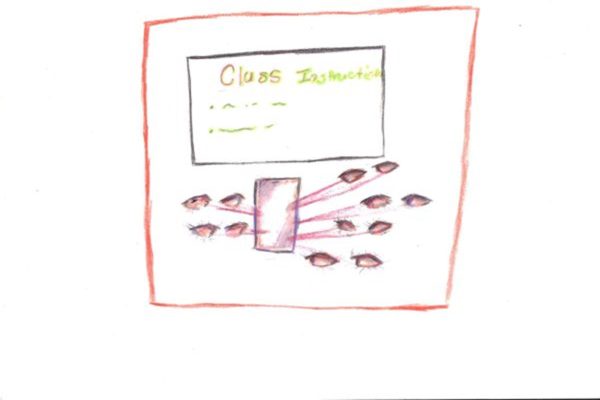Student burnout; a serious issue or just laziness?

staff editorial
Students finally returned to school this fall after the pandemic caused school closures not only across the country, but around the world. Some students had not been in classrooms for at least 18 months after COVID struck in March 2020. Therefore, it’s not surprising that some students are struggling to acclimate back into a proper and “normalized” school environment.
However, the issue seems much larger than many were expecting. Many students are experiencing a ‘burnout’ when it comes to their classes and their schoolwork. ‘Burnout’ refers to the feeling of complete exhaustion when it comes to school work, and the feeling one gets after working themselves to what they feel is their limit. This has always been an issue as it is not uncommon for students to experience academic ‘burnout’ during their later years of school; more and more students, even younger children, have reported they felt like this as of late.
Even though ‘burnout’ is something that can often occur, the stress is multiplied due to the year and a half students spent at home. Students already had to go through the tumultuous era of at home learning, but now they are going back to classrooms. The workload has suddenly doubled again without any transition time, and many students were not prepared for the transition.
According to Healthline.com, in April 2020, 40 percent of students who were surveyed reported feeling symptoms of ‘burnout’. In April of this year, 71 percent reported feeling burnout.
After transitioning from being at home all the time, to suddenly waking up in the early hours of the morning, attending in person classes for seven hours, along with the amount of work students must complete seems to have increased tenfold. It is no wonder students are extremely overwhelmed.
According to the CEO of the National Association for College Admission Counseling Angel Pérez, these levels of high school student ‘burnout’ are unprecedented and many experts in student’s mental health are extremely concerned, especially when it comes to seniors who are applying to college.
This issue has stumped school staff; they’re struggling to come up with a solution for the glaring issue.
However, to some, the answer is clear: the feeling of ‘burnout’ is real, and schools should be prioritizing their student’s mental health above all else.
According to TeachforAmerica.org, specialist Marlena Sauceda says that after the struggle that the pandemic has caused, there is now a persisting mental health crisis in students. Schools should be focusing as much energy as possible on the student’s mental health.
Grades are important to all schools, but at the end of the day, a student’s well-being takes precedent. There is no point in having good grades if a student is suffering mentally. Besides, if schools are actively working against burnout, then grades will improve along with mental health.
Some school districts have been catching on.
According to The University of Utah, there are schools in the state that have been funneling thousands of dollars into their mental health programs in order to assist their struggling students. Schools have been providing more resources to counselors and teachers so they can be better equipped for helping their students, and providing ways for students to learn about self-care.
However, despite all of the struggle of students, and many experts encouraging schools to help alleviate the feeling of burnout, some are questioning the validity of ‘burnout’ itself.
According to The New Yorker, some scientists believe that the term ‘burnout’ is much too vague, and that it is too redundant when compared to official disorders. In fact, some studies suggest that ‘burnout’ cannot really be distinguished from depression. Thus, they feel that the focus on ‘burnout’ is unnecessary.
Also, some people do not see the difference between the concept of ‘burnout’ and laziness. To them, people who claim they are feeling the symptoms of ‘burnout’ are actually just being lazy and not wanting to do their job or schoolwork. In their minds, they don’t understand the focus on ‘burnout’ if people are just being lazy.
However, these arguments fail to see the bigger picture. Schools all across the country are reporting ‘burnout’, both colleges and grade schools. According to BU.edu, 83 percent of students say that their mental health struggles have been affecting their academic performance. So, even though ‘burnout’ may still be a somewhat vague concept, it’s still something that is real and damaging.
Students in this country are suffering, and this suffering is not born out of laziness. There are serious mental health struggles in students all across the country, and action must be taken now.
Schools have the opportunity now to help their students get the resources they need to save themselves from ‘burnout’. It is up to the schools to support their students and their struggling needs. It’s obvious that students are under a crushing amount of stress, and schools should be doing everything in their power to make sure these students do not give up on their work. If schools work to help their students, it could make all the difference in the world.










